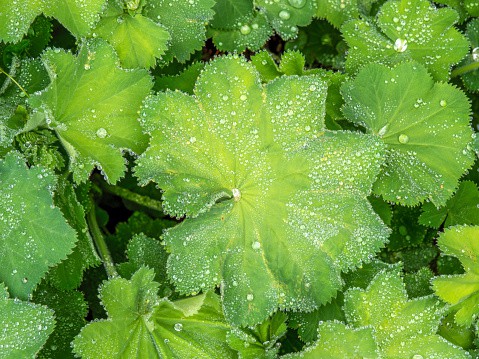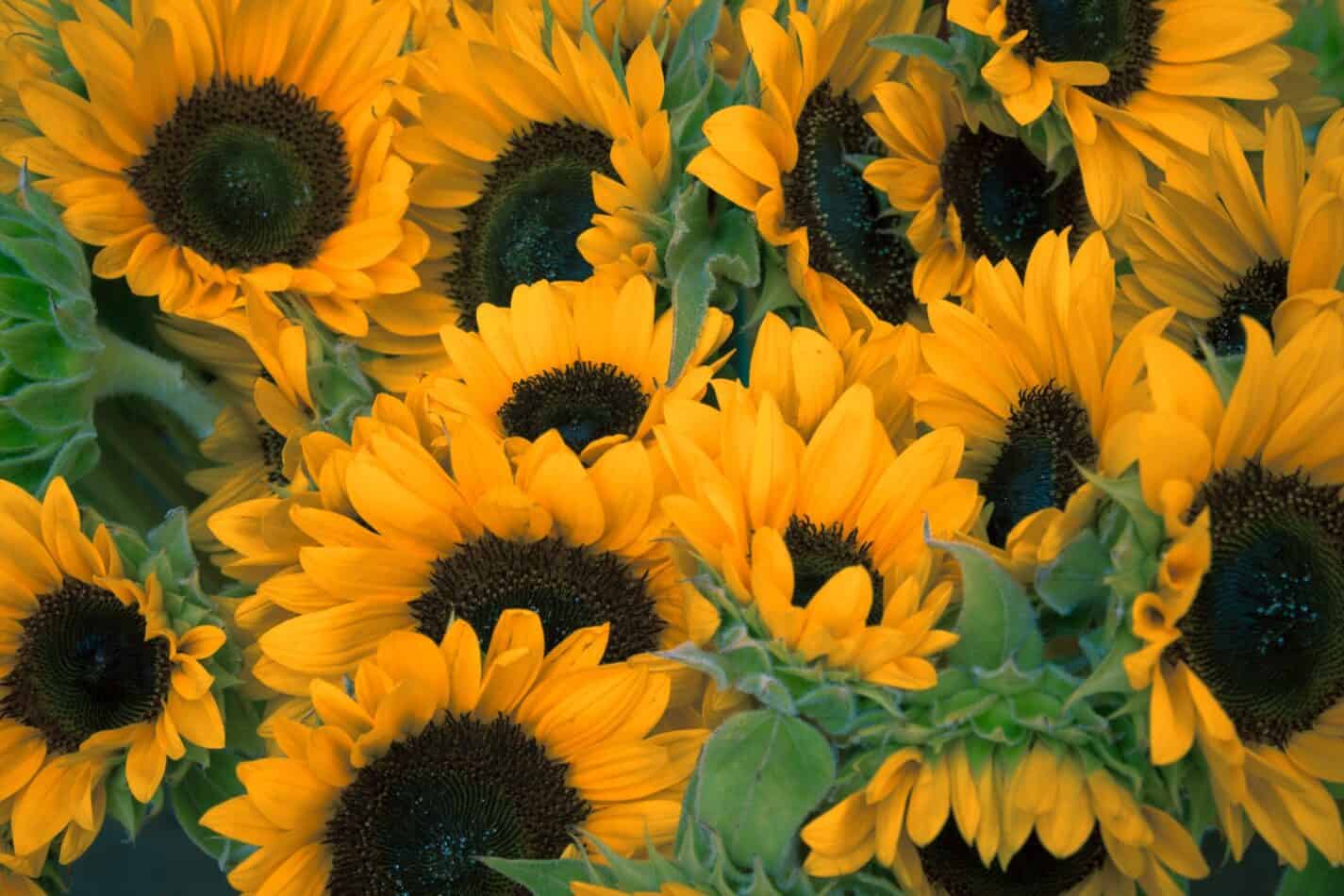Ladys Mantle, also known as Alchemilla mollis, is a highly prized perennial flower. It has won many awards and recognition from the Royal Horticultural Society (RHS). It is a delightful addition to any garden and provides plenty of interesting foliage for months on end. This flower is a member of the rose family and is classified as a perennial, meaning it will grow year after year.
The flower is named after the Greek goddess, Athena, whose many names include Athena mollis and Alchemilla. The name mollis means “soft” in Latin and it refers to the plant’s hairy, soft leaves. The common name, Ladys Mantle, comes from its ruffled, frond-like foliage that is reminiscent of capes worn by medieval ladies.
How to Plant and Grow Ladys Mantle
Ladys Mantle is an easy to care for flower that can be planted in moderate to high light settings. It prefers gardens that receive direct sunlight throughout the day but can also be grown in partial shade. When planting, it is important to consider the soil type and pH levels as Ladys mantle prefers well draining, acidic soil. A mixture of potting soil and peat moss works best. It is also considered drought tolerant so water only when the soil feels dry to the touch.
The ideal temperature to grow Ladys Mantle is between 40°F and 65°F and its humidity requirements are low. Fertilizing is not necessary, however applying a slow release fertilizer during the summer season will help keep the plant looking its best.
Meaning and Symbolism
In European culture, Ladys Mantle is often seen as a symbol of fertility and love. It has a long and varied history of use in divination rituals and magic spells. It was also used to treat and cure various ailments in medieval Europe. The Alchemilla mollis is a symbol of protection and strength, often seen as a charm or talisman to ward off bad luck or evil spirits. In classical mythology, this plant is associated with the Greek goddess of wisdom and war, Athena, reminding us of the strength and courage inside us.
History, Mythology, and Religious Significance
In medieval Europe, Ladys Mantle was commonly referred to as “Our Lady’s Mantle”, referring to the Virgin Mary. It was believed to possess many healing and protective powers and was often planted near homes and churches to ward off evil spirits. In some cultures, the plant was used to make love potions and wish-granting substances for courtship. In ancient Egypt, it was known as a sacred herb and was burned to cleanse and purify sacred spaces.
Flower Varieties and Their Defining Characteristics
There are several varieties of Ladys Mantle that one can choose from. The most common are Alchemilla mollis, with green foliage and small pale yellow flowers; Alchemilla erythropoda, with purple-red foliage and white or yellow flowers; and Alchemilla glabra, a taller variety with deep green foliage and white or yellow flowers. Each variety has its own defining characteristics:
- Alchemilla mollis – The leaves are green, round and toothed, with a hint of yellow flowers in mid-summer. The plants usually grow up to 18-24 inches tall.
- Alchemilla erythropoda – This variety has toothed, red-purple foliage and small white or yellow flowers. The plants tend to reach a height of 15-25 inches.
- Alchemilla glabra – This variety has lacey foliage with a deep green color and white or yellow flowers. These plants will reach up to 20-25 inches high.
How to Pot and Repot
After obtaining Ladys Mantle, it is important to pick the right sized pot to ensure the health of the plant. It’s best to select a pot with a diameter slightly larger than the pot it was previously potted in, as Ladys Mantle are prone to becoming rootbound in small containers. After the appropriate sized pot has been chosen, make sure to completely saturate the soil with water before planting. To prevent root rot, make sure the plant does not sit in water for extended periods of time.
Ladys Mantle should be repotted on a yearly basis. When repotting, remove the plant from the old pot and trim away any roots that are overgrown. Place the plant in the new pot and fill with fresh soil. After planting, water well and leave in a warm, sheltered location. Once the plant is firmly established repotting can be done every few years.
How to Prune
It is important to prune Ladys Mantle throughout its growing season. As the season progresses, remove any dead or dying blooms to regulate the plant’s energy use and encourage further blooms. Also, remove any foliage or flowers that have become damaged. In the late fall months pinch back any new growth to encourage bushier, more full plants come springtime.
How to Propagate
Propagating Ladys Mantle is easy and can be done through cuttings. In mid spring to early summer, take 4-6 inch cutting and dip the end of each cutting in rooting hormone. Place the cutting in a prepared pot with damp soil and water sparingly. Place the pot in a warm, sheltered spot and in two to three weeks you should start to see new roots emerging from the cuttings. Once your cuttings have rooted, transplant them into their own pot and water them correctly.
Common Pests and Diseases
Ladys Mantle is susceptible to many different pests, including aphids, spider mites and snails. Taking preventative measures can help reduce the risk of pest infestation. Like all flowers, Ladys Mantle is sensitive to disease. The most common diseases affecting the plants are root rot and mildews. To prevent these diseases, it is important to ensure the plants are not overwatered, have good air flow and are grown in the correct soil conditions.
Three Frequently Asked Questions about Alchemilla mollis
Q1: Does Ladys Mantle need a lot of sun?
A1: Ladys Mantle does not need a lot of sunlight, but it does require moderate to high light settings. It prefers full sun during the day but can also do well in partial shade.
Q2: What is the recommended temperature range for growing Ladys Mantle?
A2: Temperature requirements for most varieties of Ladys Mantle range from 40°F to 65°F for optimal growth.
Q3: How often do I need to water my Ladys Mantle?
A3: Ladys Mantle should be watered when the soil feels dry to the touch and it should be watered thoroughly each time. However, it is considered fairly drought tolerant, so you don’t need to over water.
A Table Fact Sheet, with Data
| Ladys Mantle | Alchemilla mollis |
|---|---|
| Family | Rosaceae |
| Plant Type | Perennial |
| Mature Size | 18-25 inches |
| Sun Exposure | Full sun / Partial Shade |
| Soil Type | Well draining, acidic |
| Soil pH | 5.5 – 6.5 |
| Bloom Time | Late Spring – Early Summer |
| Flower Color | Green – Yellow |
| Hardiness Zones | 4-7 |
| Native Area | Europe and Asia |
What we love from Amazon this week
Buy these wonderful flowers directly from Amazon:















